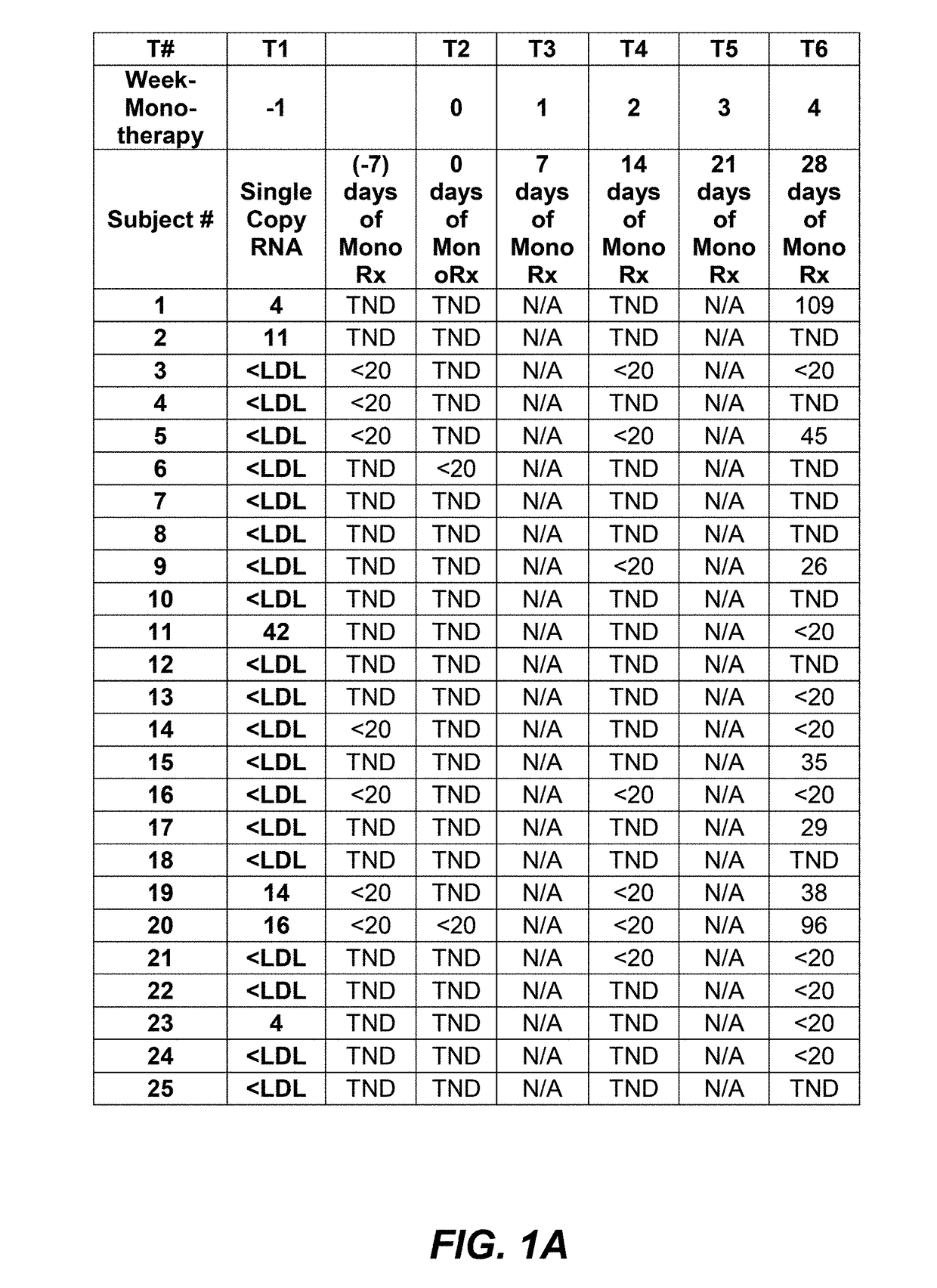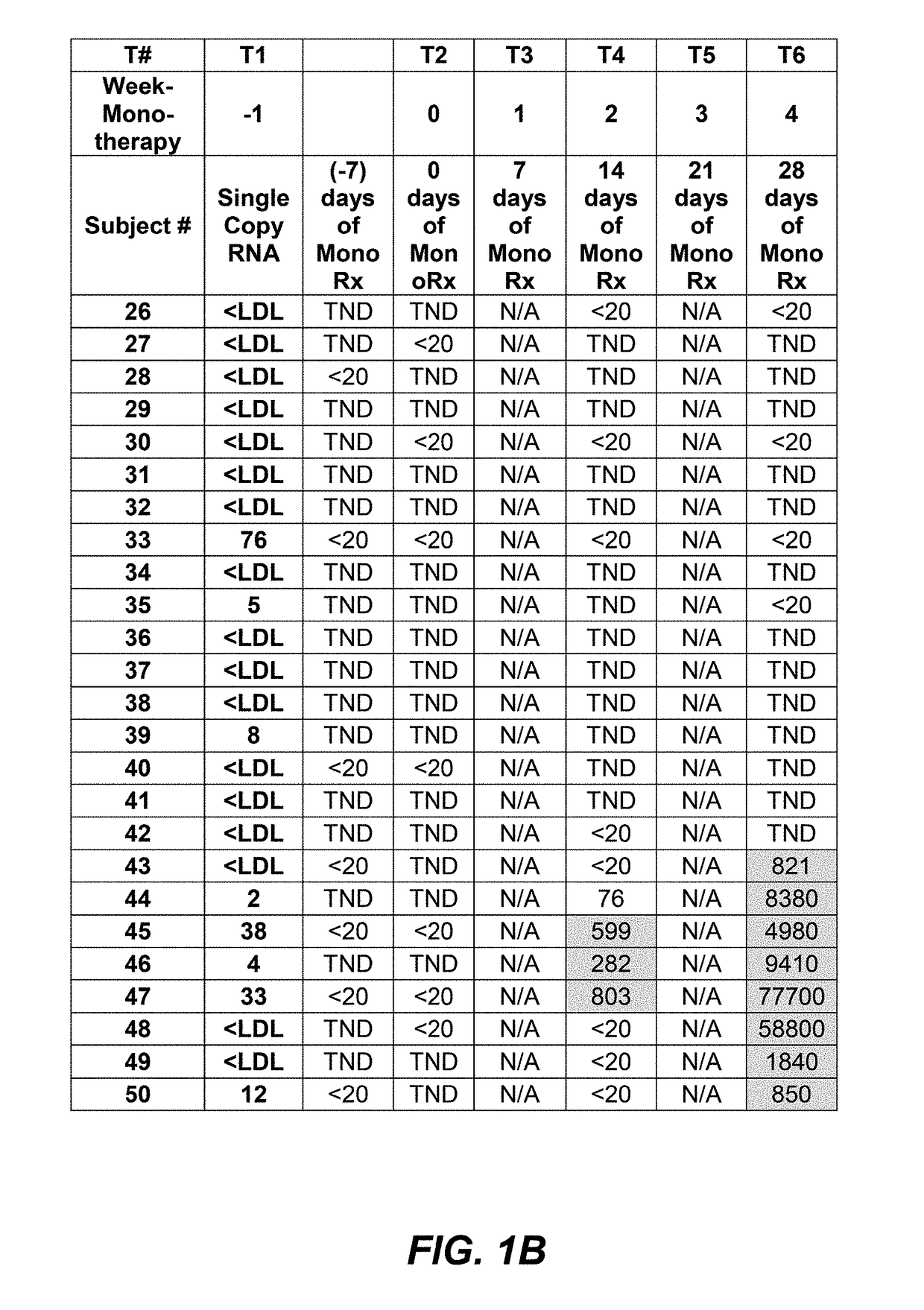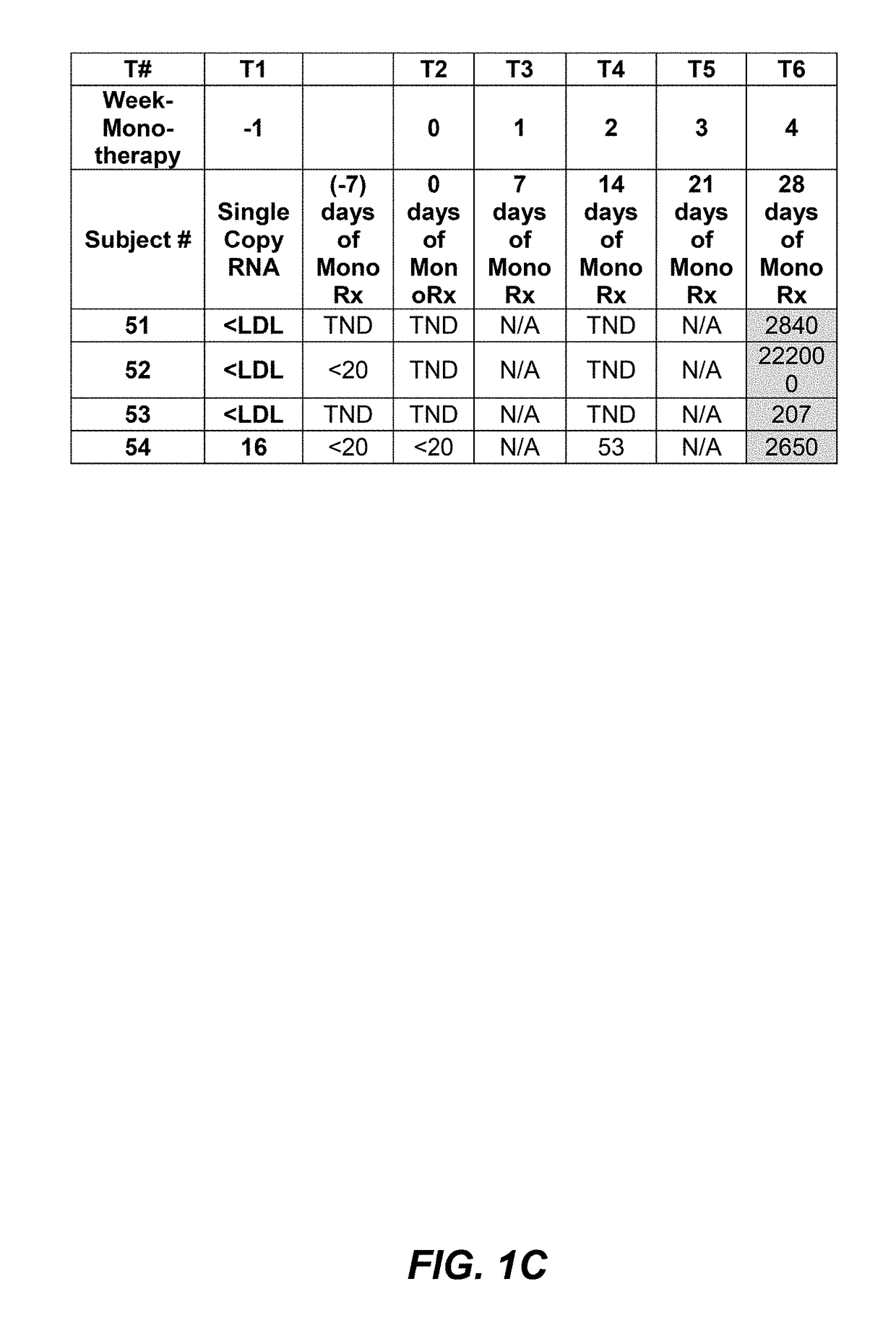Screening methods for identifying and treating hiv-1 infected patient sub-populations suitable for long term Anti-ccr5 agent therapy
a technology for hiv-1 infection and sub-populations, applied in the field of identification and treatment of hiv-1infected patient sub-populations, can solve the problems of persistent or residual viremia, long-term morbidity still occurs, treatment fails to achieve or maintain optimal viral suppression in many individuals, etc., to achieve optimal suppression, effective prognosis, and better the likelihood of success
- Summary
- Abstract
- Description
- Claims
- Application Information
AI Technical Summary
Benefits of technology
Problems solved by technology
Method used
Image
Examples
example 1
HIV-1 Infected Subject Viral Load Suppression After Four Weeks PRO 140 SC Monotherapy Relative to Single Copy RNA Viral Load Count Prior to Monotherapy
[0117]Interim data from subjects where PRO 140 was administered as a 350 mg subcutaneous (SC) injection weekly was analyzed to look at the importance of viral load counts, including viral load counts below 40 copies / mL or 50 copies / mL, as such may relate to monotherapy success. PRO 140 350 mg subcutaneous injection was administered to subjects in two consecutive doses and study participants were monitored for viral rebound on a weekly basis.
[0118]An interim data set for fifty-four (54) subjects having completed four (4) weeks of SC PRO 140 monotherapy is provided in FIG. 1A, FIG. 1B, and FIG. 1C. As shown in FIG. 1A, FIG. 1B, and FIG. 1C, of these fifty-four (54) subjects, forty-two (42) maintained viral load levels that were actually undetectable, or totally non-detectable (TND), 400 copies / mL at four (4) weeks.
[0119]It is understood...
example 2
Rationale for Dose Selection
[0128]The dose of 350 mg administered SC administered, for example, in Example 1, was chosen in light of a previous analysis suggesting that such a dose would be likely to provide maximal viral load suppression.
[0129]In studies with antiviral agents that block viral entry through the CCR5 receptor, it is conventionally believed that in order to achieve robust antiviral effects and minimize the potential for drug resistance in combination therapy, the dose of drug should result in exposures that fall on the plateau of a Maximum Drug Effect (Emax) plot. FIG. 2 shows an Emax analysis of antiviral data generated with IV and SC PRO 140.
[0130]The maximal viral load reduction was analyzed with regard to drug exposure for PRO 140. FIG. 2 shows this relationship. Analysis shows that PRO 140 350 mg weekly dose is expected to fall on the plateau of the Emax plot. Here, the maximal change in HIV-1 viral load from baseline was determined at any point 59 days after ini...
example 3
PRO 140, a Monoclonal Antibody Targeting CCR5, as a Long-Acting, Single-Agent Maintenance Therapy for HIV-1 Infection
[0134]Forty-one adult patients, infected exclusively with CCR5-tropic HIV-1 with viral loads PRO 140, a monoclonal antibody targeting CCR5, as a long-acting, single-agent maintenance therapy for HIV-1 infection, HIV CLINICAL TRIALS, vol. 19, no. 3 (2018).
[0135]Participants were monitored bi-weekly for one year, and every four weeks thereafter for virologic rebound. PRO 140 provided virologic suppression in 23 / 41 (56.1%) participants for 12 weeks and was well tolerated. Ten (10) participants continued and at least nine participants have completed more than two years of monotherapy treatment (47-129 weeks). At the two-year time point, seven of the 10 study participants had viral loads of less than 1 copy / mL using single-copy HIV RNA assay (bioMONTR lab), while the other three had values of 4, 10, and 19 copies / mL. Participants experiencing virologic rebound achieved ful...
PUM
| Property | Measurement | Unit |
|---|---|---|
| time | aaaaa | aaaaa |
| time | aaaaa | aaaaa |
| time | aaaaa | aaaaa |
Abstract
Description
Claims
Application Information
 Login to View More
Login to View More - R&D
- Intellectual Property
- Life Sciences
- Materials
- Tech Scout
- Unparalleled Data Quality
- Higher Quality Content
- 60% Fewer Hallucinations
Browse by: Latest US Patents, China's latest patents, Technical Efficacy Thesaurus, Application Domain, Technology Topic, Popular Technical Reports.
© 2025 PatSnap. All rights reserved.Legal|Privacy policy|Modern Slavery Act Transparency Statement|Sitemap|About US| Contact US: help@patsnap.com



